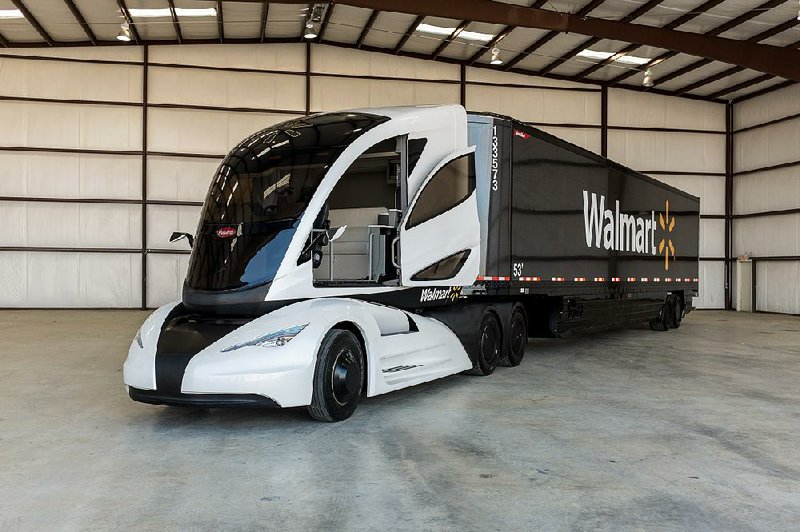Wal-Mart’s recently unveiled concept hybrid truck isn’t quite street-legal. Some of the components included in its futuristic blend of aerodynamic design and fuel-efficient technology could be a decade away from mass production.
Rushing the Walmart Advanced Vehicle Experience (WAVE) truck onto the highways was never the point, those involved with the project said. Wal-Mart and its more than 20 partners, including Peterbilt Motors Co., Great Dane Trailer and Capstone Turbine Corp., designed the truck over the past four plus years in hopes of it being a catalyst for innovation.
“This gives us a stretch goal,” said Elizabeth Fretheim, director of business strategy and sustainability for Wal-Mart U.S. Logistics. “We’re hoping this ignites a sense of excitement that something can be done to take bold steps.If it kind of gets a competition going, that would be great. Our main objective is to get it out there and get people interested in innovation.”
Wal-Mart and its partners sought to push the envelope on the truck in a number of ways. From the hybrid engine to the dolphin-nosed cab and carbon-fiber trailer, the vehicle is a glimpse of where trucking and transportation could be headed.
Powering the truck is a micro-turbine hybrid powertrain that utilizes an electric motor and battery. Innovations in design have helped cut down on traditional tractor-trailer weight by about 2 tons. Strides in aerodynamics alone make the truck, at least in initial testing, about 10 percent more fuel-efficient than existing models.
Drivers are positioned in the center of the cab with LED instrument panels on the right and left. Technology inside the cab is something Wal-Mart could implement sooner than other parts of the concept vehicle.
Wal-Mart U.S. Logistics gave a first glimpse of the truck during a recent sustainability conference. A You-Tube video has been viewed about 400,000 times since debuting Feb. 17 and the truck has been a frequent topic of conversation for Fretheim.
Evolving fuel-efficiency and emissions standards, rising costs of fuel and the responsibility of on-time deliveries make innovation a must for Wal-Mart and other shippers. New fuel-economy rules looming for medium and and heavy-duty trucks will go into effect in 2019, leaving haulers looking for more efficient ways to haul. Since 2005 Wal-Mart has been working to double its efficiency by 2015.
Wal-Mart reports its fleet is about 80 percent more efficient compared with its 2005 base line. Transport Topics ranks Wal-Mart, with 6,523 tractors and 61,743 trailers, as the fourth-largest shipper owned fleet in North America.
Discovering next-generation technology to improve efficiency was a goal that united Wal-Mart and its partners.
“We’ve taken conventional diesel design about as far as we can in regards to efficiency,” Peterbilt Motors manager of advance concepts Bill Kahn said. “We need to push the envelope.”
It’s the power train that might be furthest from real-world implementation. Costs associated with energy storage technology mean it’s currently not feasible in vehicles as large as a tractor trailer, Kahn said. Wal-Mart trucks operating in urban areas would seem to be the most likely to utilize the technology first because a mix of on-highway and inner-city driving would be ideal for a hybrid-style engine, already popular for transport buses.
Great Dane’s contribution is a carbon-fiber trailer, rounded at one end to make it more aerodynamic and lighter to aid in fuel economy. A lighter trailer, in theory, allows for additional loads to be included in the trailer.
David Grant, director of marketing for Great Dane, said participating in the project was consistent with its reputation as a “pioneer” in the trailer industry.
“The concept of customization to what the customer needs is what we’re all about,” Grant said. “We make stock trailer designs, but the way trailer technology evolves is through trying new things.”
Now that it’s built, evolving the concept truck is a priority for Wal-Mart and its partners. They’re hopeful additional testing will lead to innovations that can be implemented in the future and, in some cases, quickly.
“Our objective is to test it and learn from it,” Fretheim said. “You’ll probably see several iterations over the next year.”
Business, Pages 69 on 03/09/2014

